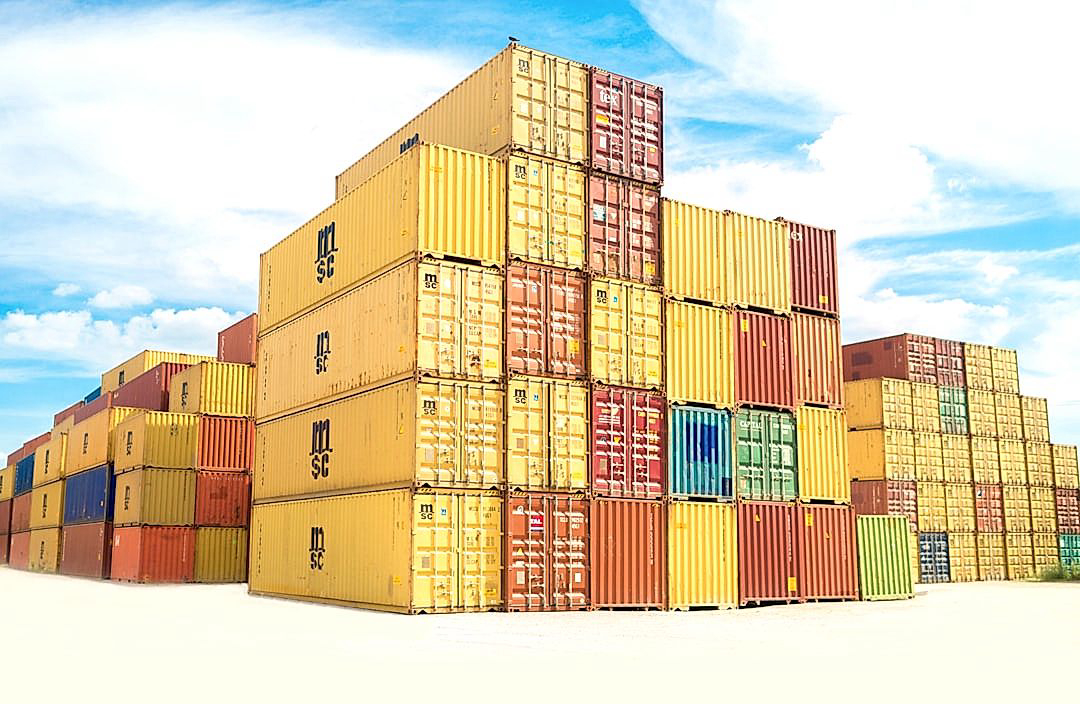In the challenging realm of produce processing, managing logistics costs is an essential task for maintaining overall profitability.
Such costs can easily escalate if not adequately managed, leading to decreased revenues and increased overall operational expenses.
Understanding the need for efficient logistics, this piece delves into several effective strategies that can be applied to reduce such costs.
Building a robust and sustainable logistics framework is vital for the growth and longevity of any produce processing business.
Before we plunge into the strategies, it’s vital to comprehend that cost-cutting doesn’t always mean a compromise on quality or service levels.
Herein, we will scrutinize multiple approaches geared towards efficient cost-reduction without sacrificing the output quality.
Contents
- Strategies For Reducing Logistics Costs In Produce Processing
- 1. Implement efficient inventory management systems
- 2. Optimize transportation and distribution routes.
- 3. Use cost-effective packaging material.
- 4. Automate Processes Where Possible
- 5. Regular maintenance of processing equipment
- 6. Streamline Supply Chain Communication
- 7. Reduce wastage and improve quality control.
- The Bottom Line
Strategies For Reducing Logistics Costs In Produce Processing
1. Implement efficient inventory management systems
Implementing efficient inventory management systems is vital to reducing logistics costs in produce processing.
These systems allow businesses to have real-time and accurate information about their inventory levels, which can prevent over or under-stocking of products.
Overstocking methods tie up capital that could be used elsewhere in the business, and they also increase the risk of produce spoilage, leading to significant losses.
Inventory management systems also enable physical stock-takes to be conducted more quickly and accurately, reducing labor costs.
Keeping track of inventory levels in real-time also gives businesses a better understanding of which products sell most quickly, allowing for more effective supply chain management.
Moreover, inventory management systems that incorporate barcoding or Radio-Frequency Identification (RFID) technology can help to significantly reduce human error in inventory counts, improving accuracy and efficiency.
When an inventory system is efficiently managed, there is a smooth flow of goods in and out of the business, minimizing delays and reducing logistics costs.
The use of cloud-based inventory management systems can also provide additional benefits, including the ability to access real-time inventory data from anywhere, allowing for more flexible and efficient decision-making.
Inventory management systems also support efficient record-keeping which is crucial for regulatory compliance, auditing processes, and ensuring accountability in the business.
Plus, as consumer demand for transparency about where and how food is produced increases, effective inventory management systems can also support this by providing complete traceability of all produce.
Moreover, investing in an inventory management system fits within the broader strategy of using technology to drive efficiencies and reduce costs in produce processing.
As technology continues to evolve, more advanced inventory management systems offer functionalities like predictive analytics, which can further enhance efficiency and cost-effectiveness.
With predictive analytics, businesses can anticipate future demand trends and adjust their inventory accordingly, reducing the likelihood of expensive rush orders or costly overstock.
All these benefits mean that investing in an efficient inventory management system can have a considerable impact on cost reduction in logistics for produce processing.
While the initial investment in these systems can be significant, they offer considerable savings over the long-term by enabling businesses to streamline processes, make better decisions and avoid costly errors.
2. Optimize transportation and distribution routes.
Optimization of transportation and distribution routes is a critical strategy in reducing logistics costs in produce processing.
In an increasingly competitive market, the manner in which produce is moved from the farm to the processing facility and, eventually, to the consumer, can significantly impact a company’s bottom line.
Route optimization involves selecting the most cost-effective route for the movement of goods.
This not only saves on fuel costs but also reduces wear and tear on vehicles, contributing to savings in maintenance expenses.
Factors to consider during this process include distance, traffic conditions, and delivery time windows.
There are innovative technological solutions available to aid in this process, such as route planning software, which uses algorithmic calculations to determine the most efficient routes.
Such software can update routes in real-time, taking into account variables such as traffic or weather conditions.
Investing in these technologies can provide a significant return on investment by streamlining routes and reducing transportation expenses.
In addition to route optimization, consolidation of loads can also contribute to cost savings.
Consolidation reduces the number of trips needed, thus saving on fuel and labor costs.
Efficient planning can ensure that each trip is maximized to its full capacity.
Also, by optimizing distribution routes, companies can reduce their carbon footprint, contributing to their sustainability goals.
This is an increasingly important consideration for businesses as consumers become more conscientious about the environmental impact of the products they consume.
Promoting environmentally friendly practices can also enhance a company’s reputation, potentially attracting more customers and enhancing profitability.
Furthermore, optimizing distribution routes can lead to improved customer service.
Fast and reliable delivery is critical for maintaining customer satisfaction, particularly when dealing with perishable goods in produce processing.
By reducing transportation times, companies can ensure fresh, quality products reach the customer promptly, thereby maintaining the integrity of the products and fulfilling customer expectations.
Ultimately, optimizing transportation and distribution routes is a multi-faceted strategy that affects multiple areas of the production process, each of which contributes to the overall goal of reducing logistics costs in produce processing.
3. Use cost-effective packaging material.
One of the more overlooked strategies for reducing logistics costs in produce processing is the simple task of choosing cost-effective packaging materials.
Not only do you need to consider the initial cost of the packaging materials themselves, but also the cost implications they may have on other aspects of your logistics chain.
For instance, heavy or large packaging can increase transportation costs due to the extra weight and space required.
Packaging that is insufficiently robust may result in increased loss and damage of the product, raising costs and wasting resources in the process.
Therefore, it is crucial to find a balance between cost-effectiveness and functionality when it comes to your choice of packaging materials.
Cost-efficient, high-quality packaging can help to reduce overall logistics costs by preventing unnecessary damage and loss, and by keeping transport costs to a minimum.
Researching and investing in new, innovative packaging solutions can also provide substantial cost savings in the long term.
For example, some companies are now exploring the use of biodegradable packaging materials, which, despite being more expensive upfront, can save costs in waste disposal and enhance the company’s reputation as a sustainable and environmentally conscious brand.
Another innovative solution is the use of returnable packaging.
While this requires an initial investment and a reliable system to ensure the return of the packaging, it can save costs over time by eliminating the need for continuous purchase of new packaging materials.
Bulk packaging is another option for cost saving, as it often costs less per unit of product than individual packages.
However, this approach may not be suitable for all kinds of produce, as it can increase the chance of damage or spoilage, especially for delicate fruits and vegetables.
Ultimately, the most cost-effective packaging material for your produce will be dependent on the specific requirements of your products and your logistics chain.
Thus, choosing the right packaging requires a careful evaluation of cost, durability, weight, size, and environmental impact.
It is important to keep exploring new technologies and innovative solutions to remain competitive and to keep logistics costs to a minimum.
4. Automate Processes Where Possible
Automating processes in the produce processing sector can significantly reduce logistics costs.
This strategy involves the utilization of technology to expedite and streamline operations without the need for constant human intervention.
From sorting to packaging, many steps in the produce processing can be easily automated, enhancing efficiency and productivity while minimizing costs.
For instance, automated systems can handle daily inventory checks and updates, ensuring accuracy and saving considerable time.
By eliminating the risk of human error and enhancing accuracy, automation can greatly lower unnecessary costs associated with incorrect data.
Moreover, automation enables workplaces to operate 24/7 without incurring additional labor costs.
Through automation, companies can redirect their workforce to more strategic tasks, while machines handle the repetitive and time-consuming operations.
The implementation of automated systems often leads to better allocation of resources, freeing up funds that can be reinvested into the business.
Additionally, automating communication processes can make order management much more manageable and lessen the instances of lost orders or miscommunications.
The automation of certain processes also leads to advanced forecasting abilities, which can optimize production planning and reduce waste.
Furthermore, the use of automation in your processing procedures can facilitate process consistency, aiding quality control and reducing wastage.
Automation also promotes greater transparency in the supply chain, by providing real-time data and analytics.
This data-driven decision making can ramp up your operations, giving you an edge over competitors who are still stuck in a manual process.
While there is an upfront cost to automation, the long-term savings are substantial.
By expediting processes, preventing errors, and boosting productivity, automation in produce processing logistics is an effective strategy to slash operational costs.
Despite the fear that automation might replace jobs, it should be viewed as a method of assisting employees and providing them with the opportunity for more creative and strategic roles.
5. Regular maintenance of processing equipment
Efficient operation of processing equipment forms an integral part in the reduction of logistics costs in the produce processing industry.
One of the most effective strategies to achieve this is through regular maintenance of processing equipment.
This is because frequent maintenance reduces the chances of total equipment failure that would otherwise halt the entire processing procedure.
An equipment malfunction often leads to stoppage of work, product losses and possibly high repair costs.
It’s also important to note that the downtime caused by a malfunction can lead to delays in delivery which subsequently impacts customer satisfaction.
Thus, the avoidance of such scenarios through regular equipment maintenance is critical in cost saving.
Performing routine checks on the machinery to confirm that they are operating at optimal levels is a practice that should be religiously followed.
As part of the routine check, worn out parts should be replaced before they break down completely.
This not only prevents an unexpected failure, but also ensures that the machinery operates at its best efficiency.
It’s also crucial to ensure the machines are well lubricated to reduce friction and subsequent wear and tear.
A machine that runs smoothly without much resistance is likely to consume less energy, which contributes to the reduction of operational costs.
Another aspect to consider is the proper training of personnel who handle the equipment.
They need to be aware of the correct operational procedures and what signs to look out for that might indicate a potential problem.
This helps in early detection of machine issues, curtailing them before they escalate into major problems, therefore saving on repair costs.
Moreover, a well-maintained machine has a longer lifespan, meaning the company will not need to invest in new machinery frequently.
Extending the life of the processing equipment by proper maintenance can therefore be viewed as a long-term investment that pays off in the form of reduced logistics costs.
6. Streamline Supply Chain Communication
Effective communication in the supply chain is an essential yet often overlooked strategy for reducing logistics costs in produce processing.
A breakdown in communication can cause disruptions and delays, which can have a significant impact on the total logistics costs.
By streamlining supply chain communication, businesses can improve operational efficiency and avoid these additional costs.
By optimizing communication within the supply chain, businesses can manage their resources more effectively, ensuring that products move through the supply chain in the most cost-effective and efficient way.
One way to enhance supply chain communication is by investing in technology.
There are numerous supply chain management software available today designed for this purpose.
Such software can help businesses improve their communication with suppliers and distributors, ensure timely delivery of products, and reduce holding and transport costs.
Additionally, they enable real-time tracking and information sharing, which can significantly reduce the risk of errors and miscommunication.
Another effective way to streamline supply chain communication is by establishing clear communication protocols.
Having a well-defined process for communication ensures that important information is shared effectively and efficiently across all levels of the supply chain.
This could include setting strict guidelines for what information should be shared, who should receive the information, and when and how the information should be conveyed.
Similarly, a framework for addressing and resolving issues that arise should also be in place, this ensures that any problems are identified and resolved quickly and efficiently, preventing delays and associated costs.
Engaging in regular meetings and feedback sessions with suppliers and distributors can also contribute to smoother and more efficient communication.
These sessions provide a chance to discuss any potential issues or improvements and create a close-knit, collaborative environment which is crucial for successful supply chain management.
Through these strategies, businesses can streamline their supply chain communication and significantly reduce their logistics costs in produce processing.
Implementing effective communication strategies in the supply chain is no doubt a complex and challenging task.
However, the potential benefits in terms of cost savings and improved efficiency make it a worthwhile investment.
By committing to improving supply chain communication, businesses can ultimately enjoy significant reductions in their overall logistics costs.
7. Reduce wastage and improve quality control.
To reduce wastage and improve quality control in the logistics process of produce processing, it’s essential to carry out systematic measures.
Understanding and identifying the reasons for loss and wastage is a crucial first step.
An audit of the whole process can be employed to highlight areas responsible for the majority of wastage.
Overproduction, defects, and inadequate maintenance are usual culprit areas contributing to a high level of waste.
By addressing these issues, we reduce the need to produce extra output to compensate for spoilage, therefore reducing costs.
Addressing these issues reduces the need to produce extra output to compensate for spoilage and thereby reducing costs.
Furthermore, an efficient waste management system needs to be implemented to deal with inevitable waste.
This would entail strategies for waste recovery, recycling, and environmentally friendly disposal.
Investing in technology can improve waste management efficacy through waste tracking, automated sorting and recycling.
Quality control is another fundamental aspect of cutting logistics costs.
Adherence to stringent quality standards not only satisfies regulatory requirements but also boosts customer satisfaction and helps retain market share.
A robust quality control system incorporates regular audits, thorough inspections, and strict enforcement of quality standards to ensure consistently high-quality produce is delivered.
Regular staff training on the importance of quality control and how to implement it effectively can also contribute significantly to reducing logistics costs.
Enhanced quality control will also reduce wastage by detecting defects earlier in the process, allowing for timely corrective actions and lessening the impact on the final product.
Importantly, keep in mind that the goal of reducing wastage and improving quality control is to boost overall operational efficiency and cut logistics costs.
By implementing these strategies, produce processing companies can achieve their objective of delivering high-quality produce cost-effectively and sustainably.
The Bottom Line
Increasing the efficiency and effectiveness of inventory management systems can dramatically enhance the profitability of any business.
Optimization of transportation and distribution routes not only improves delivery efficiency but also significantly reduces transportation costs.
Utilizing cost-effective yet durable packaging materials can save a tremendous amount of expenditure which can then be funnelled into other essential aspects of the business.
Automation significantly garners time efficiency and allows for manpower to be utilized in areas where human intervention is truly necessary.
Regular maintenance of processing equipment is crucial to avoid any unforeseen breakdown or dysfunction which can cause untimely delays and losses.
Clear and efficient communication within the supply chain can greatly enhance operational efficiency.
Lastly, a stringent quality control system, can not only reduce wastage but also increase customer satisfaction and promote brand loyalty.
Therefore, an efficient, cost-effective, and streamlined supply chain is the key to the sustained success of businesses in the competitive market scenario.




